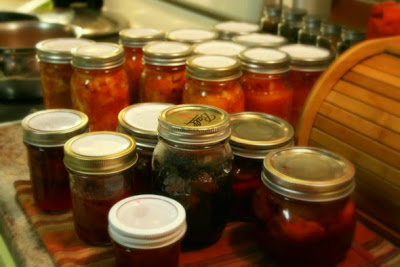By Aivlys_Nagrom
Some say men are made for hard labor and women for nurturing. That may be seen as a basic fact of life to some, but what isn’t so basic is what those things mean, especially in this day and age.
What isn’t so basic is what those things mean. Sometimes nurturing means protecting, and sometimes protecting means violence. For some women, the instinct to fight only comes up when their children are threatened. For others, it comes up whenever someone looks at them the wrong way. And then there are those who never tap into that vein at all, who simply fall off the cliff of becoming victims.
I’ve had apocalyptic dreams since I was a child. And I’ve always aware of and concerned by the fact that modern society has led us further and further away from the natural world. Basic facets of how we survived in the past have fallen away. Farming, blacksmithing, animal husbandry, hawking, hunting, tracking … these were all fairly common skills for men until the recent past. Women knew canning, soapmaking, herblore, sewing, weaving, took raw goods and made them into meals, clothes, medicine. Now we unwrap packages, press a few buttons, pour a few sauces or spices over something, and men grill store-bought meat on store-bought grills. In a way, every modern convenience we snap up widens the disconnect between us and the planet we walk on.
Warnings and speculation about the End are becoming pretty commonplace, even as worst case scenarios unfold before us on the nightly news. At this time, Japan is in a state of crisis following the devastation of earthquake, tsunami, and nuclear explosion. Natural disasters, climate change, nuclear threat, plagues, battles for resources … these things no longer inhabit the realm of paranoia or imagination. They’re in the headlines. They are monsters in front of us, monsters of our own creation, and they’re getting closer every day. Personally I don’t think we’re going to get hit by one single event. I don’t think a nuclear World War 3 will wipe out most of humanity within a few days, or that life as we know it will come to a screeching halt on 12/21/12. Instead, I think we’re facing a slow, horrible descent into devastating wars for dwindling resources, third-world living conditions, and possibly extinction. Whether it turns out to that the future holds epidemics, water wars, food shortages, a classic Armageddon meteor, or all of the above, most of us will be pretty helpless without our modern conveniences. What do you do to prepare? How do you get ready? Should you stock up on rice and peanut butter? That might sound like a good idea after a few hours of CNN, but really? You’re better off filling your head than your pantry. Even canned goods don’t last that long.
My dad is something of an outdoorsman, and he taught me some basics. Nothing too intense, but enough to where I probably would have had a decent shot at surviving a stint in the wilderness up north at a pretty young age. By the time I was five I knew what to do if I was stuck in a blizzard (snow fort) lost in the woods (follow stream to river or use the sun to guide me) or kidnapped (run, even if it means jumping out the window of a moving car). I knew how to dig cat-o-nine tail roots and make pine needle tea. Of course, now that I live in Florida, most of this knowledge probably isn’t going to be very helpful, but I’ve always sort of picked up little tidbits and information. And this is what I’ve learned; knowledge is power.
You can’t be ready for everything. Learning native plants isn’t going to be a huge help if Yellowstone blows and buries your hometown in ash, knowing karate isn’t going to save you if a nuclear bomb falls on your head, and having a larder full of canned food is going to be useless if a bomb, flood or earthquake obliterates your home. But it just may happen that in some dark future day, you might find yourself homeless and broke. There may come a day that yourself are your only resource, or that someone else looks at you and sees you as a resource or a trophy. You can either do nothing now, and set yourself up to be very vulnerable, or you can build yourself a safety net …. in your own body and brain. You might be married to a Marine or a wildlife expert, but if you’re relying solely on him, that reliance could be your downfall if something happens to him. If I had the means, I’d have a castle with huge walls protecting an orchard, a stocked fishpond, cattle, horses, and a garden. I’d have solar panels, cisterns and an herb garden, and be within walking distance of the sea. This would all also be protected by wolves and owls, and my friends and I could spend the years after the apocalypse learning how to brew really good beer. In reality, I have about a backpack’s worth of camping gear, a few really good books, a head full of trivia, and the ability to keep my calm in crazy situations. The last is by far the most important.
Here are a few tips for women.
BUY SEEDS. Buy lots of seeds. Save your seeds carefully. Seeds are cheap and light.
LEARN HOW TO GARDEN AND COMPOST. This isn’t just a worst-case scenario survival thing. Look at the list of ingredients on any processed food item and ask yourself if you really want to eat things you can’t pronounce, much less identify.
LEARN HOW TO DRY FISH AND MEAT Buy a small smoker.
BECOME FAMILIAR WITH THE RAILROAD TRACKS IN YOUR AREA. Know where they go. In the event of a huge disaster, everyone’s going to try for the road. If you really need to move, a railroad track might be a better bet, especially once you’re a bit out of the city.
KNOW THE WATER ROUTES IN YOUR AREA. You might be better off in a kayak or boat than on foot.
LEARN BASIC HERB LORE Guessing at plant uses can be deadly, but even just knowing the uses of a few local plants could be very helpful.
LEARN SELF DEFENSE/WEAPONS USE No further explanation needed on that one.
LEARN NATURE. I struggled with how to describe this one, and just picked the basic way. Let yourself learn the sort of knowledge that saw us through the first ten thousand years of civilization. Look outside for the nearest tree, and see if you even know what kind of tree it is or if you know one thing you could do with it other than chopping it down to get wood. This isn’t just about survival. This is about getting to know the planet. We only have one, after all.
GET BASIC SUPPLIES. If you can fill a pantry, buy a cabin, build off the grid, or dig a bunker, great. Have at it. If nothing else, put a backpack together with some basics (the usual, rope, knife, garbage bags, hair ties, vitamins, underwear, etc.) Watch enough videos to have a good idea of how to start a fire (just in case) and throw matches and lighters in there. Include a pumice stone (lightweight and will do the job in case you run out of soap), garlic, basic camping-type gear. Don’t forget a comfort item or two – an Ipod, a pleasure-reading Kindle, nail polish, perfume, photos of your loved ones, whatever you think will keep you from completely losing your mind in a really bad situation. Sometimes it’s the little things that keep you grounded, and sometimes being grounded will save your life.
GET A SURVIVAL-DEDICATED KINDLE and fill it with useful knowledge about farming and tracking and basic medical herb lore and maps, first aid, canning techniques, soap making, etc. Of course it would be better if you could learn all this, but for a lot of us being able to access what you can’t memorize may be a lot more doable. The internet, wonderful store of knowledge it is, will be inaccessible if there are no satellites. Books are heavy. But a Kindle can run independently. And there’s a lot you can put on a Kindle that may be worth saving. You can download the Army survival guide. Instructions for building a solar generator for under $300. Plans to build an eco-friendly self-sustaining house. While you’re at it, get a solar-powered battery charger.
CAMOUFLAGE TECHNIQUES. You may have absolutely no plans to creep around the woods or a war-struck city at night, ever, but just having the foresight to damp your jewelry and darken your skin and hair could save your life in a situation like that. (Bonus: stock up on mud masks. You can be sneaky and give yourself a facial at the same time)
BE GREEN. Buying eco-friendly dish soap or organic tomatoes may not help you out a whole lot in a worst-case scenario, but in the end you’re either a part of the problem or a part of the solution, and war over resources is a front-running contender for Really Bad Thing Most Likely To Happen. You can choose to support companies that engage in things like factory farming, genetically modifying crops and animals, animal testing, pollution, poisoning the Gulf of Mexico, or fracking … or you can choose not to. If you love animals, don’t support companies that treat them cruelly.
KNOW YOUR LOCAL TERRAIN If you live in Vegas, you might want to learn a bit about desert survival, and so on.
KNOW WHAT YOU’RE CAPABLE OF I love Bear Grylls, but there’s no way in hell I’m scaling a cliff wall or eating live grubs. I have a crap memory so I’d probably kill myself trying to identify edible wild plants from memory, but I can recognize a few common ones, and I know a few fairly idiot-proof fishing techniques. I know how to purify crappy water (boiling kills germs but doesn’t clean the water), how to desalinate seawater, how to harvest seaweed, and how to make bark edible.
RETHINK WHAT YOU’RE CAPABLE OF – Instead of waiting to feel strong, learn how it feels to declare yourself strong and then step into it. All the strength you need is inside you. You don’t need to wait for the end of the world to tap into it. Doomsday may never come. But any step that takes you away from the path of a victim to the path of a survivor makes you a stronger, better you.
REDEFINE WHAT YOU’RE CAPABLE OF – If you work out regularly, read regularly, and keep yourself informed by reading survival blogs, you can wake up every day stronger and smarter than you were the day before.
RELAX. Live. Love. Laugh. Knowing how to unwind and re-set your mind might be more important than you think. Prepare for tomorrow, but live for today.
Women today have to be ready for anything to happen at any moment. That’s ok. Our greatest strengths lie within us. Maybe in the end, that’s what separates us from men.
Article copyright © 2011 Aivlys_Nagrom and The Sarah Connor Charm School
Photo copyright © 2001 Saigh Kym Lambert

